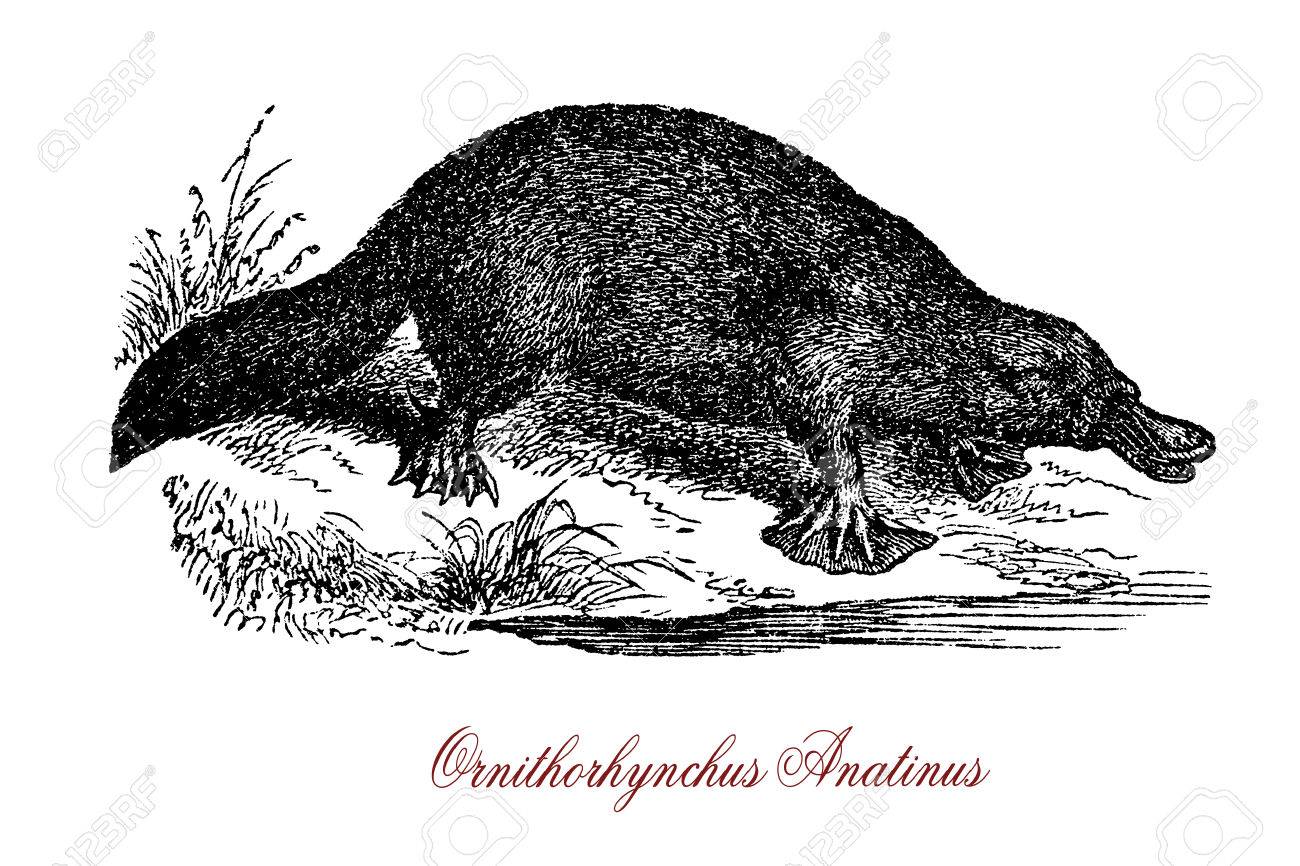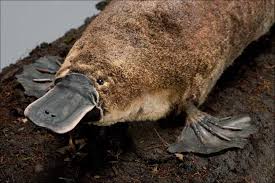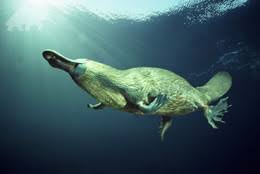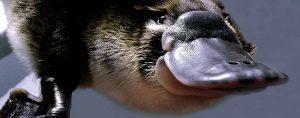
 Is it a mammal or a reptile or a bird? The remarkable platypus has a thick, beautiful coat of fur and looks at first glance like any respectable mammal. But the mother platypus digs a burrow on a river bank where she lays her eggs. After hatch, unique from all other animals, she nurses her babies with breast milk. In addition, this amazing animal has what appears to be a duckbill, but a very fancy one fitted out with exquisitely sensitive nerve endings called electroreceptors that detect prey. Its reptilian sideways feet scream alligator; the male platypus has a stinger with venom, like a snake, that can sentence a victim to months of pain unaffected by opiates.
Is it a mammal or a reptile or a bird? The remarkable platypus has a thick, beautiful coat of fur and looks at first glance like any respectable mammal. But the mother platypus digs a burrow on a river bank where she lays her eggs. After hatch, unique from all other animals, she nurses her babies with breast milk. In addition, this amazing animal has what appears to be a duckbill, but a very fancy one fitted out with exquisitely sensitive nerve endings called electroreceptors that detect prey. Its reptilian sideways feet scream alligator; the male platypus has a stinger with venom, like a snake, that can sentence a victim to months of pain unaffected by opiates.
The origins and evolution of the platypus remain a mystery and many scholars have declared that this genetic mess “should really be extinct.” Bitter debate raged among eminent scientists of the early 19th century who desperately wanted to ‘classify’ the little creature and now, 200 years later controversy continues. Modern teams of scientists have found that the platypus egg genome matches those previously found only in birds, amphibians and fish. The breast milk of the platypus has genes for the same family of milk proteins found in human milk. The platypus venom tracks reptilian-like genes.
A New York team of scientists found “microRNAs that are shared with chickens and not mammals as well as ones that are shared with mammals, but not chickens.” link And many scientists draw a false conclusion from this genetic soup. For example, Matt Phillips of Australian National University theorizes, “The new genomic data make a water-tight case for [platypus] egg-laying truly being a primitive retention from reptilian ancestors.” link
Why primitive? Why burden a marvelously adapted creature with this pejorative? It is true that the animal is ancient. The literature, including serious science writing,  tells us the platypus was ‘discovered’ in Australia in 1797. I imagine Platypuses were perfectly aware of their existence long before European naturalists first spotted them swimming happily in a river just outside Sydney. The platypus was a contemporary of dinosaurs according to Timothy Rowe of the University of Texas, surviving “without any problem” the 85% extinction of life, including all the dinosaurs, at the end of the Cretaceous. link
tells us the platypus was ‘discovered’ in Australia in 1797. I imagine Platypuses were perfectly aware of their existence long before European naturalists first spotted them swimming happily in a river just outside Sydney. The platypus was a contemporary of dinosaurs according to Timothy Rowe of the University of Texas, surviving “without any problem” the 85% extinction of life, including all the dinosaurs, at the end of the Cretaceous. link
One of my favorite scientists, Stephen Jay Gould, writes passionately about the mistake of confusing early or ancient with undeveloped. Gould is both deeply religious and a tireless advocate for evolution; and, in fact relies on Proverbs for his favorite metaphor for evolution: a multi-branched Tree of Life. See Bully for Brontosaurus, 1991. He disdains evolutionists who imagine a ladder where reptiles are on a rung below mammals and are considered more “primitive” than mammals.
The platypus is not some ill-formed creature whose characteristics failed to blossom into complete mammalness. It is instead a perfect animal, in the sense that the adaptions of fur and milk were well and good, but egg-laying and sideways feet built for swimming were good as well, worth hanging on to. Gould urges us to throw off the shackles of thinking one kind of attribute such as egg laying is primitive and inferior and another like feeding babies with breast milk is progressive and superior.
One shackle to lose this year: imagining life progressing ever upwards, the newer always being better. The platypus reminds us that there are old things that do not need be changed.
